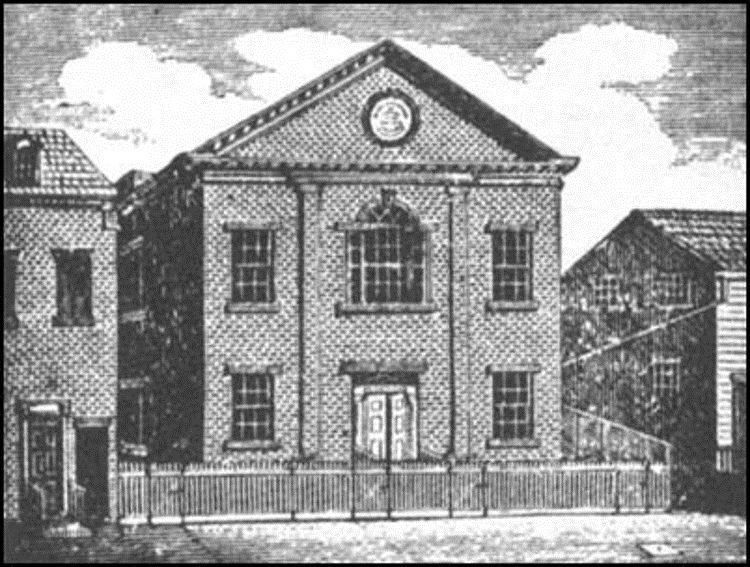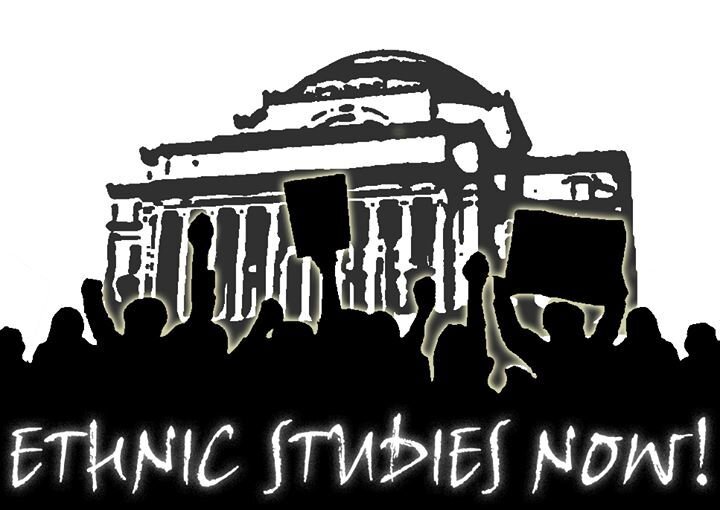La Lucha por La Educación Culturalmente Receptiva
La lucha por la educación culturalmente receptiva y cursos étnicos en la educación de K-12 ha sido parte de la historia de este país durante más de cien años. A menudo, las victorias clave y los hitos en la justicia educativa no se atribuyen a los padres y estudiantes que lucharon para lograrlo. Esta línea de tiempo se centra en la organización diaria, dirigida por jóvenes y padres, para que sigamos recordando los inmensos legados e historias en las que nos cimentamos cada día, y las posibilidades dentro de cada uno de nosotros.
¿Cómo encaja tu trabajo y lucha por la educación culturalmente receptiva y los estudios étnicos en esta línea de tiempo? Escribe en la historia de tu propio grupo.
Escuela libre Africana de Nueva York (1827-1836)
En 1789, la New York African Free School fue establecida por la Sociedad de Manumisión de Nueva York, un grupo de estadounidenses blancos ricos, en base a la creciente población negra libre de la ciudad. A diferencia de las escuelas de caridad blancas que existían, la escuela se convirtió en un punto central para el empoderamiento y las aspiraciones de los estudiantes negros. En la década de 1820, los líderes de la comunidad negra exigieron una opinión en la determinación de las políticas educativas en las escuelas libres africanas, un conflicto considerado como la primera lucha por el control comunitario de las escuelas públicas urbanas en la nación.
Escuelas de Idioma Japonés, Hawái (1890-1920)
La primera escuela de idioma japonés se estableció en 1893, con el apoyo de los niños migrantes japoneses y sus padres que trabajaban como plantadores de azúcar, donde los estudiantes podían aprender de la cultura y el idioma japonés. Las escuelas pronto entraron en controversia asociada con el creciente sentimiento nacional antijaponés. Los maestros y directores de idioma japonés fueron algunos de los primeros en ser detenidos durante la Segunda Guerra Mundial y las escuelas fueron cerradas por temor a que promovieran un comportamiento "antiestadounidense".
Padres del Bronx Unidos, Nueva York (1966-1989)
Frustrada por la falta de educación de calidad para los niños puertorriqueños y otros niños de color, Evelina López Antonetty, alias, “La señora del diablo del Bronx", trabajó con los padres para fundar United Bronx Parents en 1965. Organizaron y capacitaron a cientos, tal vez miles, de padres puertorriqueños de clase trabajadora y otros padres de color, para exigir educación de calidad en toda la ciudad, educación bilingue, programas de liderazgo juvenil y mucho más.
¿Cómo encaja tu trabajo y lucha por la educación culturalmente receptiva y los estudios étnicos en esta línea de tiempo? Escribe en la historia de tu propio grupo.
Historia Afroamericana, Distrito Escolar de Filadelfia (1967)
En noviembre de 1967, más de 4.000 estudiantes afroamericanos realizaron una protesta pacífica frente al edificio de la Junta de Educación para hacer un llamado a la enseñanza de la historia afroamericana, y por más maestros y administradores afroamericanos, entre otras demandas. El comisionado de policía llamó a cientos de agentes de policía a escena que luego atacaron a los estudiantes con gases lacrimógenos y batones. Las protestas crearon las bases para los cursos de historia afroamericana y el plan de estudios culturalmente relevante que se implementará en las escuelas públicas de Filadelfia. Los estudios de la historia afroamericana fueron aprobados como un requisito de graduación para todos los estudiantes en 2005.
Frente de Liberación del Tercer Mundo, San Francisco, CA (1968)
El Sindicato de Estudiantes Negros y una coalición de otros grupos estudiantiles conocidos como el Frente de Liberación del Tercer Mundo (TWLF, por sus siglas en inglés) lideraron la huelga más larga en la historia de los Estados Unidos, en la Universidad estatal de San Francisco (SFSU, por sus siglas en ingles) para 5 meses. Exigían igualdad de acceso a la educación superior pública, más maestros de color titulares en la facultad y un nuevo plan de estudios que abarcaría las historias y culturas de todas las personas de color. Como resultado, la primera facultad de estudios étnicos se estableció en SFSU en marzo de 1969, creando la base de los estudios étnicos y un marco para el futuro trabajo de base de K-12 para los estudios étnicos.
Decisión de la Corte Suprema de Lau contra Nichols (1974)
En Lau contra Nichols, los padres de Kinney Kinmon Lau y otros estudiantes chinos presentaron una demanda colectiva contra el presidente del Distrito Escolar Unido de San Francisco, Alan Nichols, y dijeron que no estaban recibiendo la ayuda y el apoyo adecuados en la escuela porque no podían hablar inglés. La Corte Suprema dictaminó que la falta de enseñanza de idiomas para los estudiantes que aprenden dentro de un segundo idioma viola la Ley de Derechos Civiles de 1964, y que los distritos escolares deben tomar medidas para prevenir situaciones injustas para el aprendizaje.
La Ley de Autodeterminación y Asistencia Educativa para Indígenas de 1975
Los internados indígenas, establecidos a finales del siglo XIX para asimilar a los niños indígenas americanos a la cultura blanca americana, obligaban a los estudiantes a cortarse el pelo, se les prohibía hablar lenguas indígenas y les daban nuevos nombres europeos, entre otras atrocidades. La Ley, que resultó de más de una década de activismo de base, incluyendo el Movimiento Indígena Americano (AIM) y el movimiento por los derechos civiles, condujo a la descentralización de los estudiantes de grandes internados indios a escuelas comunitarias más pequeñas y alimentó el cierre de muchos internados indios en los años 80 y 90.
Revitalización del Lenguaje Hawaiano, Hawái (1982)
En 1896, la educación en lengua hawaiana en todas las escuelas públicas y privadas fue prohibida. A medida que el número de parlantes con fluidez disminuyó drásticamente, en 1982, un grupo de educadores de idiomas hawaianos restableció las escuelas de educación media hawaianas que centraron el idioma y la cultura hawaianas. Hoy en día, hay un sistema completo de nivel preescolar a nivel de doctorado en Hawái, donde se enseña usando completamente el idioma hawaiano.
Plan de Estudio de la Cultura y el Lenguaje de la Nación Navajo (1984, 2004)
En 1984, la nación Navajo ordenó que todas las escuelas dentro de sus límites incluyeran estudios de lengua y cultura navajo en su currículo K-12. En 2004 abrió sus puertas una escuela primaria de inmersión, Tsé Hootsooí Diné Bi' Olta'. La escuela K-6 enseña lengua y cultura navajo a sus 133 estudiantes en la capital de la nación Navajo.
Estudios México-Americanos, Tucson, AZ (1998)
En 1998, el programa de Estudios México-americanos (MAS, por sus siglas en inglés) surgió en el distrito escolar unificado de Tucson (TUSD) para los estudiantes de primaria, secundaria y superior. En 2011, la gobernadora Jan Brewer aprobó un proyecto de ley que exigía la prohibición del programa MAS del distrito. El programa fue eliminado y reemplazado por programas extracurriculares MASS (Mexican American Student Services, servicios estudiantiles México-americanos). En 2017, un juez de distrito de los Estados Unidos declaró que la ley que prohíbe los cursos de estudios mexicano-estadounidenses violó los derechos de la primera enmienda de los estudiantes al restringir la información y la cláusula de igual protección de la enmienda 14a al aludir a los latinos. La lucha por MAS continúa.
Lucha por los Estudios Étnicos en las Escuelas K-12 de California (2014)
El 17 de junio de 2014, El requisito de estudios étnicos del distrito escolar unificado del Rancho lo convierte en el primer distrito escolar en hacer que los estudios étnicos sean un requisito de graduación de la escuela secundaria. Hoy (a partir de octubre de 2019), otros 15 distritos escolares de California tienen un requisito de estudios étnicos, incluyendo San Francisco y Los Angeles. La lucha continúa haciendo de los estudios étnicos un requisito de graduación en todo el estado.
Estudios Étnicos, Oregón (2017)
En 2017, debido a años de trabajo organizativo dirigido por jóvenes, el Proyecto de Ley 2845 de la Recamara, que requirie que el Departamento de Educación de Oregón adopte estándares de estudios étnicos en las clases de estudios sociales para las escuelas K-12 en todo el estado.
¿Cómo encaja tu trabajo y lucha por la educación culturalmente receptiva y los estudios étnicos en esta línea de tiempo? Escribe en la historia de tu propio grupo.





















































